You may remember that, last year, I mentioned how thrilled I was to be invited, along with Kirsten Kapur, to design a sweater for Susan Gibbs and Emily Chamelin’s project The Shepherd and The Shearer. Well, the sheep have been shorn, the yarn has been spun, the patterns have been written, and a lovely booklet and a sweater’s worth of yarn is about to wing its way to 200 subscribers. I’ll explain the process, and my part in it.
Susan’s original brief was one I found particularly exciting: to design a functional cabled sweater that would suit the robust properties of a good, natural woollen-spun yarn, that would wear well and look good over time. For my swatches and sample I used some local Scottish stuff that we imagined would be a really good match for how Emily and Susan envisioned their yarn turning out – New Lanark Aran (a yarn whose weight is equivalent to a US ‘worsted’) . I popped over to the mill to pick up yarn for my sample back in April, and decided that I wanted to make a simple, functional hoody – a garment which a shepherd might easily throw on before nipping outside to check her animals. I thought I’d use a simple modified drop-shoulder construction (a style that’s easy for shepherds of all body shapes and sizes to wear) and an allover cable pattern (both fun and straightforward to knit). I finally settled on a stitch that I have always found really pleasing.
When knit, this alternating cable has a lovely rhythm to it. It is simple enough to make the knitting a pleasant distraction, but has enough action to remain interesting to work. This was the cable for the Shepherd hoody! I started to work on the design.
While I was knitting away in Edinburgh, over the pond in the US, Emily was shearing sheep.
The fleeces used for the Shepherd and the Shearer were shorn by Emily from animals raised in fifty flocks on small farms across the Mid-Atlantic region. One thing I find particularly interesting about the yarn that’s resulted from the project is the variety of identifiable breeds and crosses that are blended in it, mixing the fleeces of ancient British breeds like Shetland, with relatively new US breeds, like the California Red Face.
After shearing, the fleeces were prepped and skirted . . .
. . .then sorted and baled
From there, the bales were taken to MacAusland’s mill in Prince Edward Island.
(Here is Emily, heroically joining the bales on their trip to the mill following an accident which severed tendons in her left hand. I’m very happy to say that after surgery and physio, she’s back to shearing again.)
MacAusland’s has been in business since 1870, and under a vertical operation where all processes are finished on-site, scours, cards, and spins raw wool into yarn on a 128 bobbin frame.
With its firm springy hand, the yarn has indeed turned out to be very close to the New Lanark Aran I used for my sample.
While the yarn was being processed and spun, the Shepherd hoody was being knitted. Here’s how it turned out.
Now, I like all my samples, but I immediately developed a very special affection for this finished garment. Once I’d put it on, I seriously didn’t want to take it off. I think its equally suited to tramping about the fields in a brisk wind . . .
. . . or cosying up by the fire on a chill winter’s evening.
The hems, cuffs and hood are finished with moss stitch.
. . . as is the pixie hood
I’ve used buttons on the facings, but they are equally well suited to the insertion of a zipper, if preferred.
The construction enables the hoody to be knit all in one piece, completely seamlessly, with minimal finishing. The pattern is sized from 30 to 57 inches, and I reckon it could easily be worn by a shepherd of either sex.
In short, I absolutely love this garment, and it was really very difficult packing it up in a box and sending it off to the US.
The pattern for the Shepherd hoody, together with that for the breathtakingly beautiful Shearer pullover, designed by Kirsten Kapur, is included in a booklet produced by Juniper Moon Farm telling the whole story of The Shepherd and the Shearer. This booklet, together with a plump package of yarn to make their choice of sweater, is about to be posted to the project’s 200 subscribers, without whom none of the processes I’ve described in this post would have happened.
From start to finish it has been a delight to be part of a collaborative project which truly celebrates sheep and wool, and which also makes transparent and legible the many different kinds of labour that go into raising and processing fibre. It is quite rare to receive a commission to design a garment to support that labour, and to showcase the unique properties of that fibre, rather than to speak to a trend, and I have to say that this is one reason I was so pleased to be invited to participate. The project has brought together the skills of many talented women and I am very proud to have been involved. I want to say a special thankyou to Lauria at Juniper Moon, who has been cheerfully brilliant at co-ordinating the project, and bringing everything smoothly together. I hope the subscribers enjoy their wonderful yarn, and the patterns that Kirsten and I have designed, and I understand that a limited further number of Shepherd and Shearer kits will also soon be available from the Juniper Moon Shop, so if you are interested in knitting yourself a Shepherd hoody or a Shearer pullover, do keep your eye on the site for updates.
Photos reproduced courtesy of Juniper Moon Farm


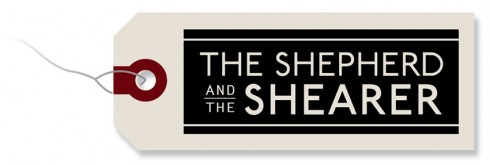
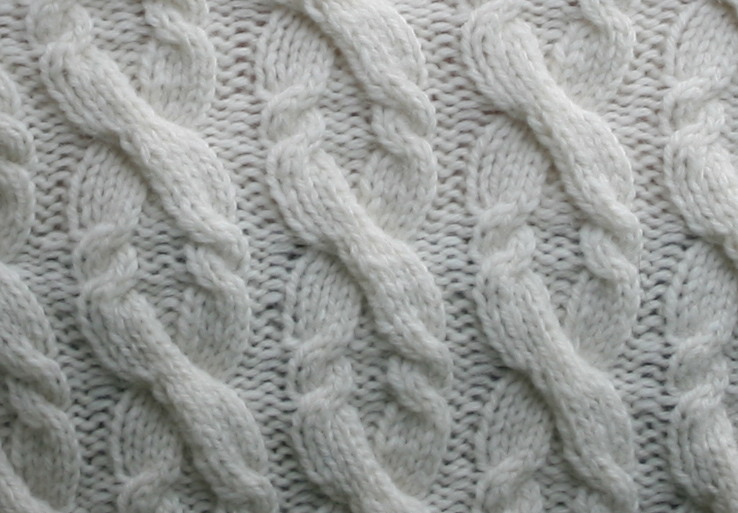

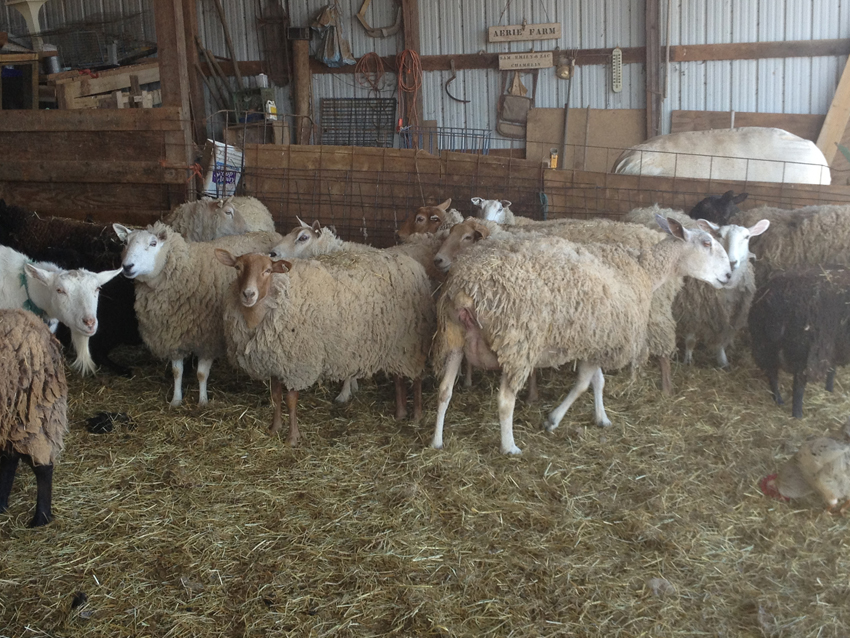
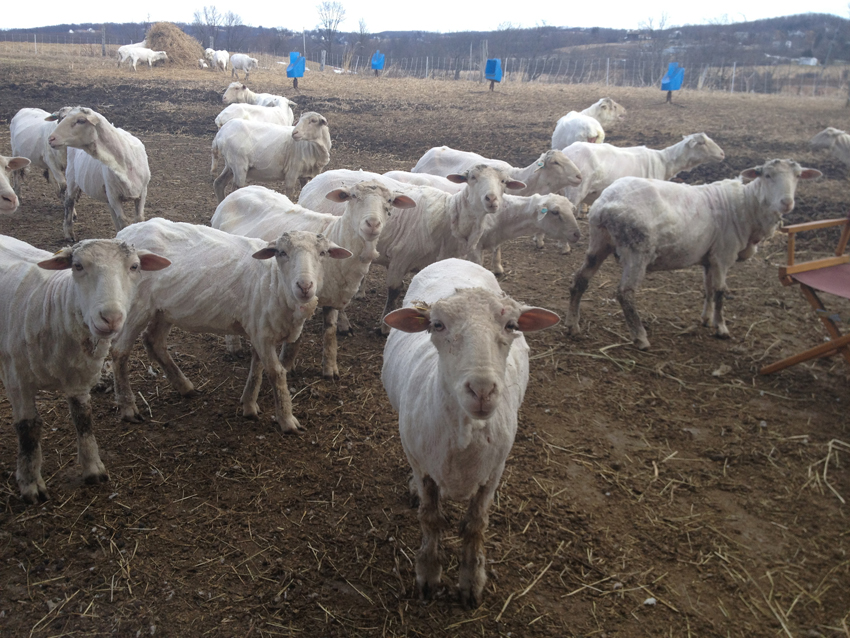
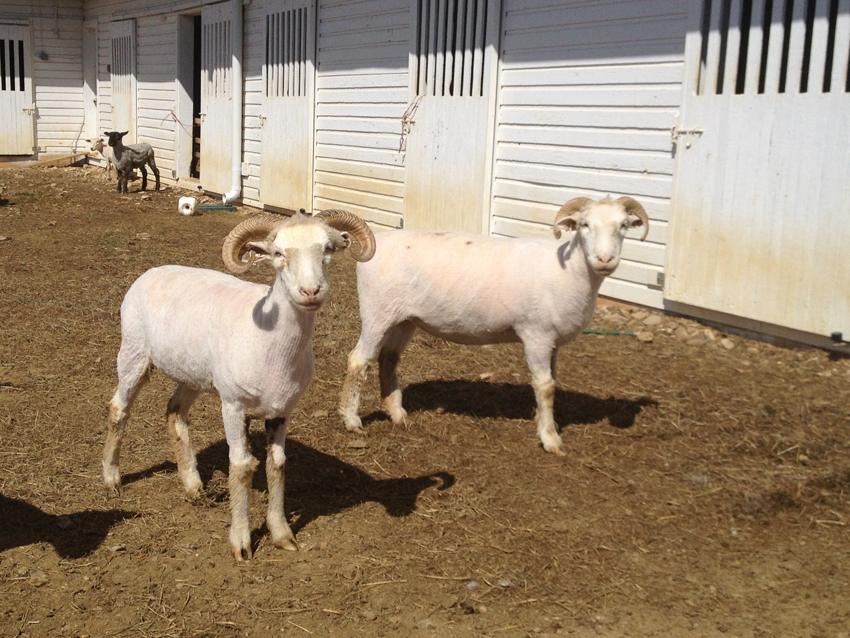
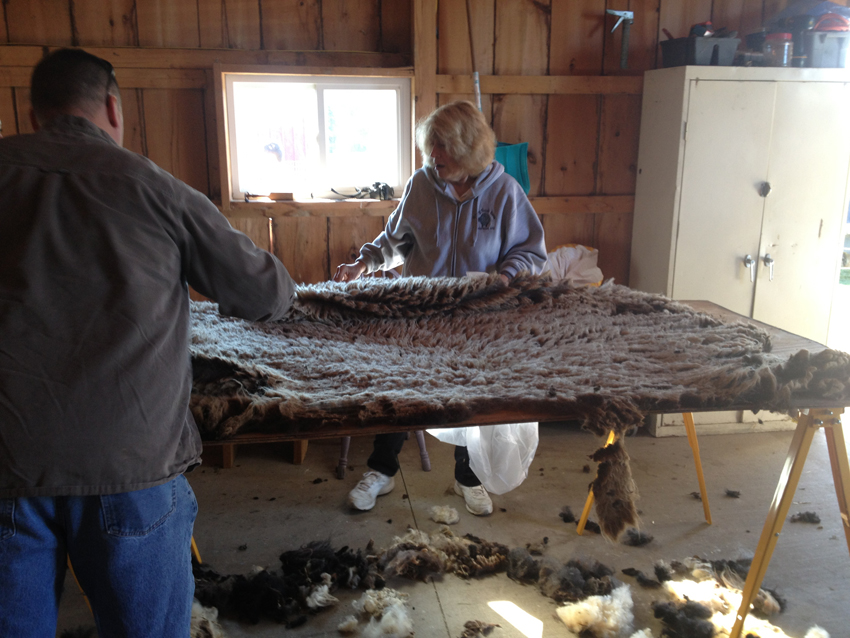

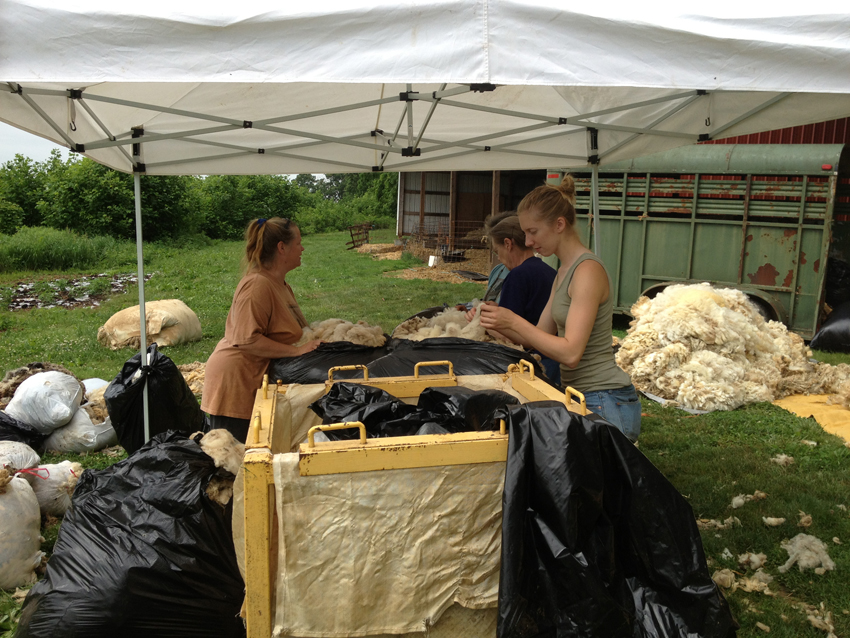
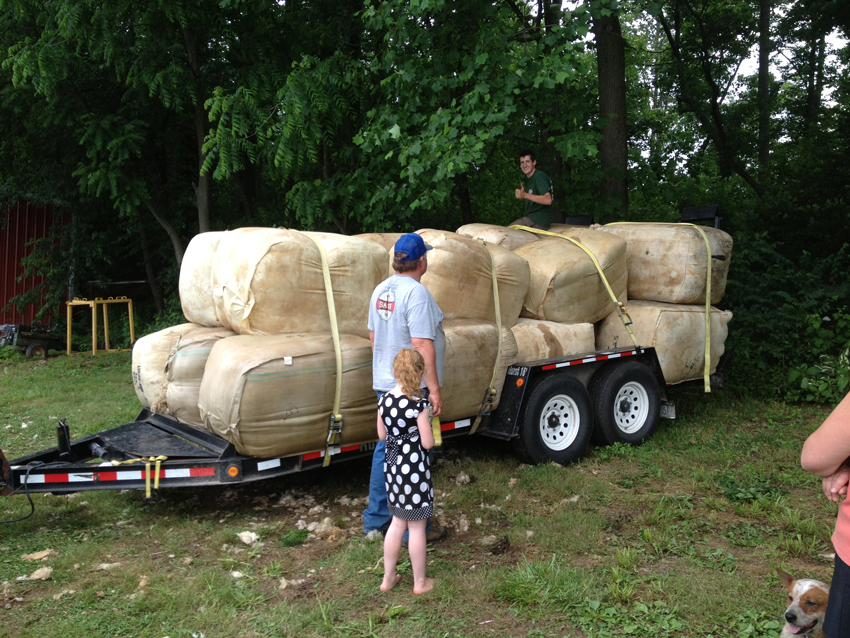
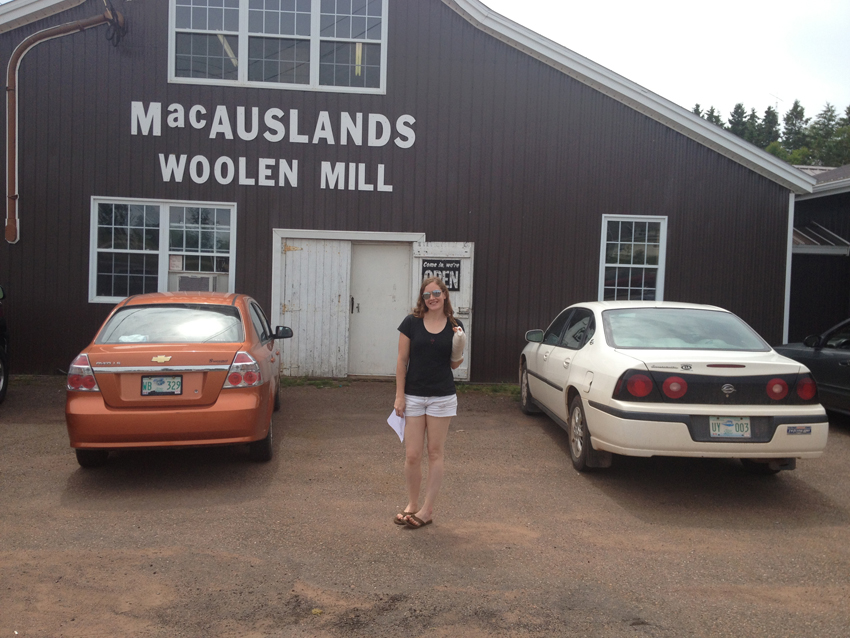
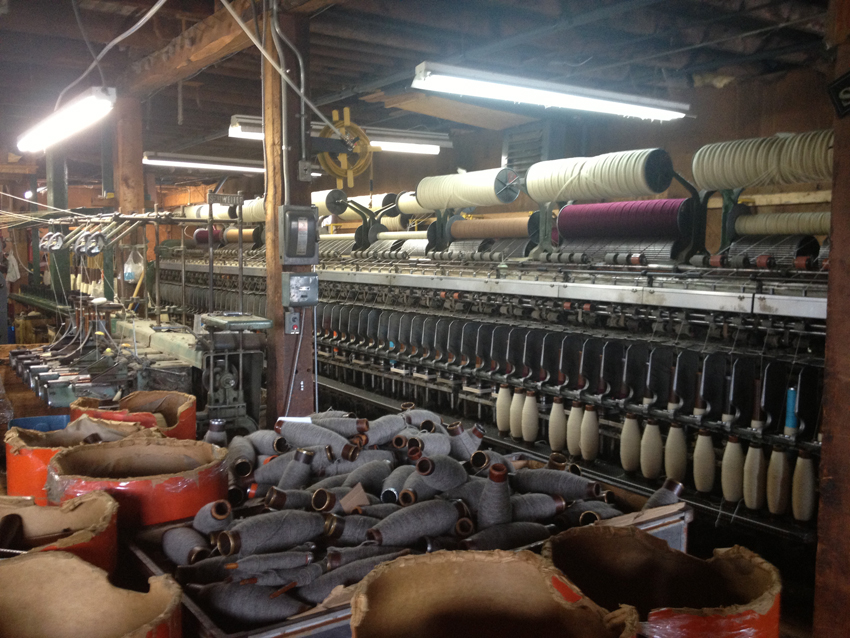

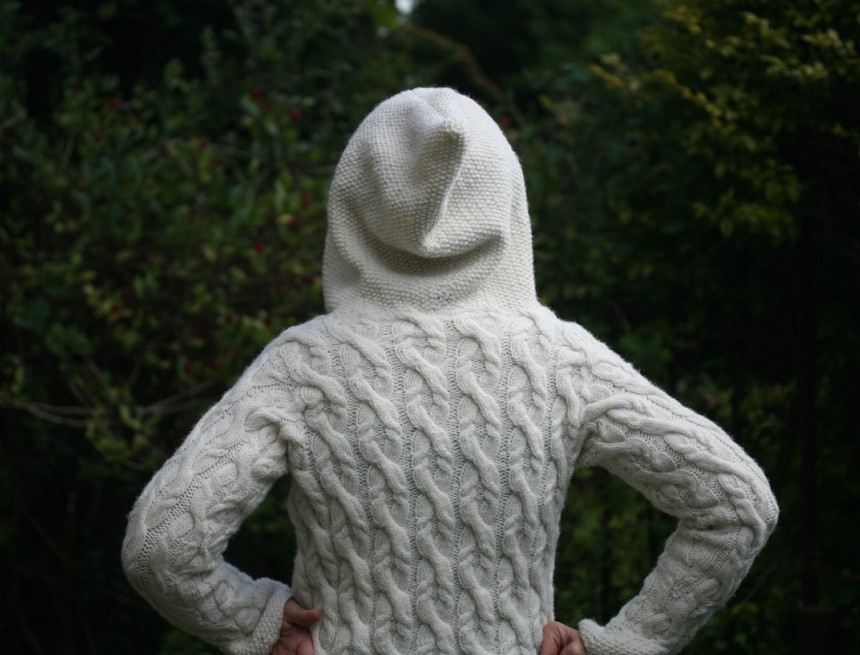

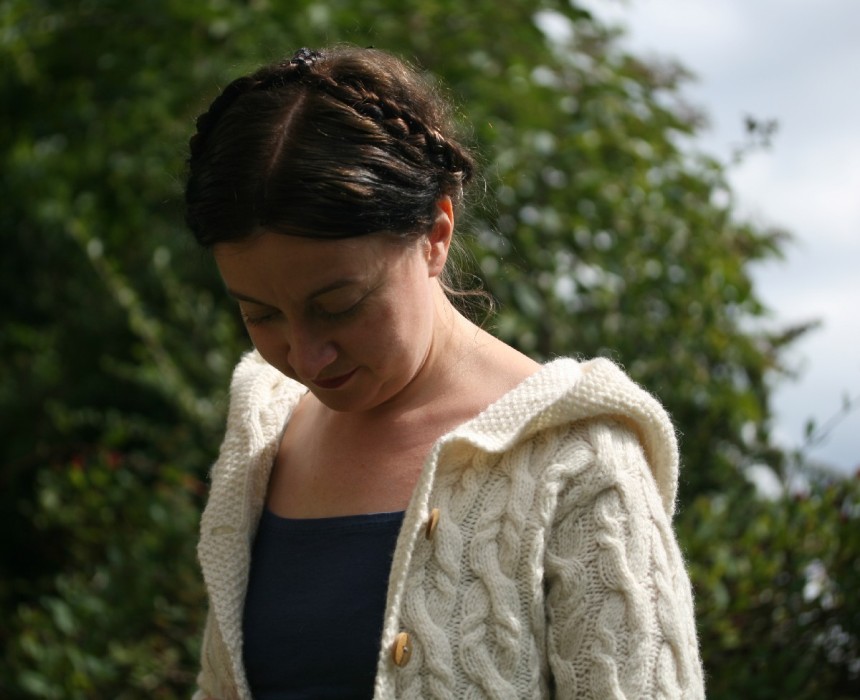
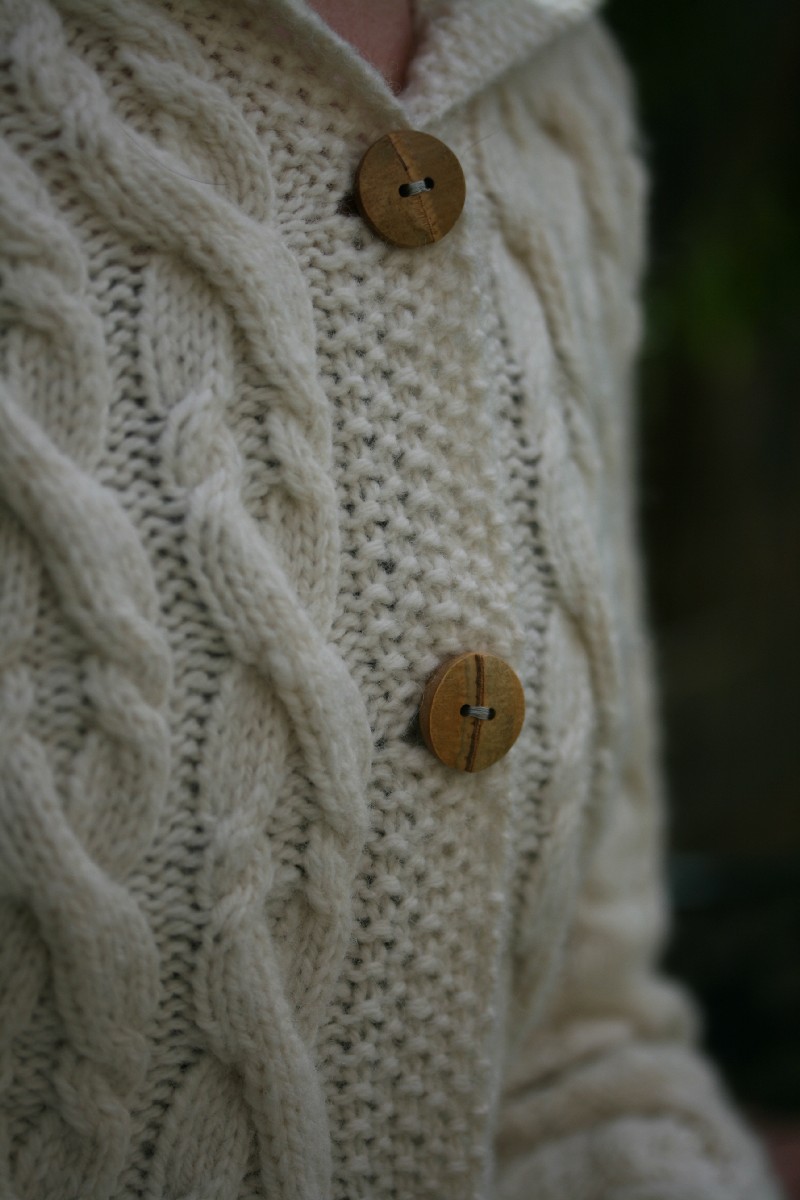



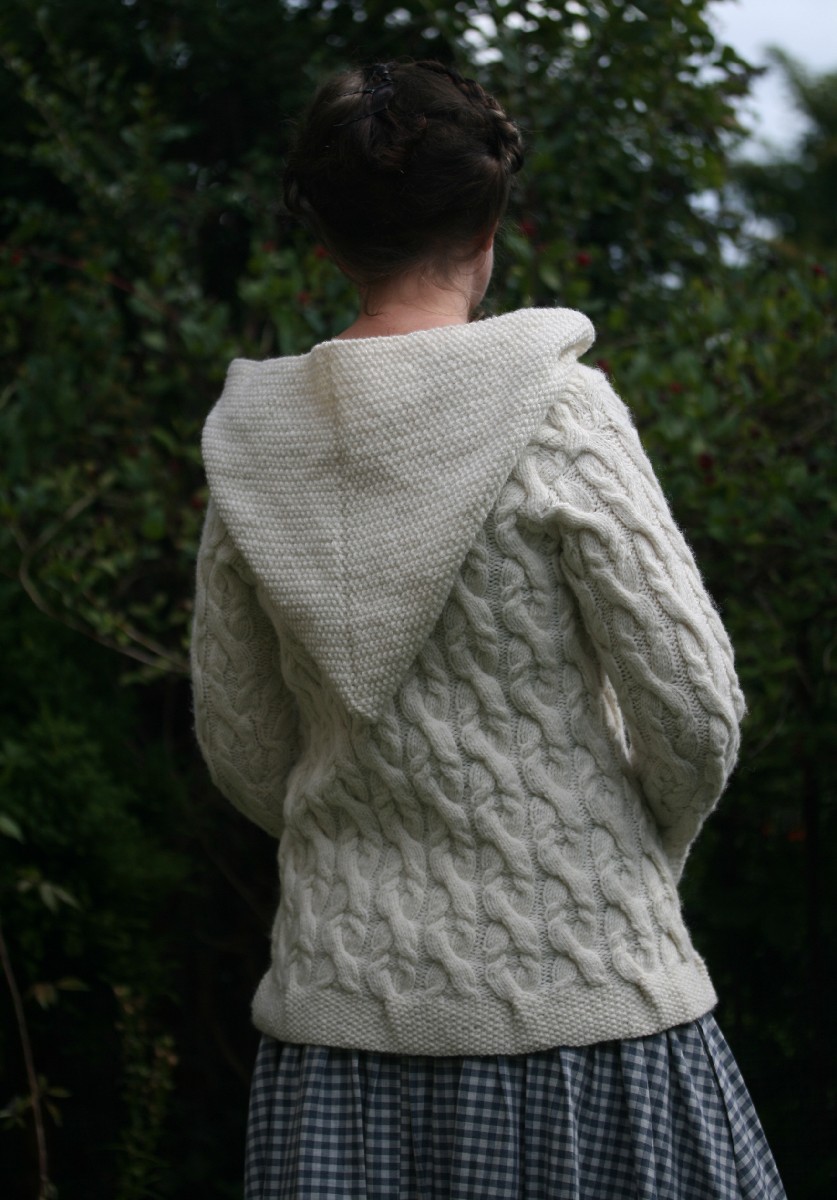
Another lovely design Kate, and a great project to be involved in. I have bought the ebook and have cast on to swatch – using wool from my stash. I’m planning a trip to Scotland next year, so will hopefully have it ready to wear then.
LikeLike
Brilliant pattern – I’ve just bought it off the Juniper Moon Farm website and am very pleased! I have stacks of wonderful wool just waiting for a project such as this – thank you very much :).
LikeLike
That cable pattern is terrific. I love this design. Any possibility of a version with a collar rather than a hood? I quite like hoodies – on other people. I think I may have been put off by the sight of a couple of little lads dropping sweetie papers into the hood of the woman sitting on the seat in front of them on a bus!
LikeLike
I agree with SANDANDSKY about our mills here on Prince Edward Island. I did not expect to see my neighbourhood in your blog post this morning and was very happy to see it indeed. MacAusland’s is my “go to” yarn for just about everything.
LikeLike
Wonderfully done! Thank you for bringing this project to a broad audience by supporting it and by creating an amazing hoodie! I look forward to receiving my share of the wool and start right away! Greetings from Vienna!
LikeLike
What a wonderful cardi and story! I love that MacAusland’s mill was chosen to process the fiber. Both MacAusland’s and Belfast Mini Mills seem to be our two best kept secrets here on Prince Edward Island.
LikeLike
fantastic! and if you’ve never had the chance to visit PEI (Canada’s smallest province) I strongly urge you to give yourself the pleasure of doing so. :) Christine M.
LikeLike
First off, I love the sweater!
Secondly, I am so bummed. We just left PEI yesterday. I wish I had known there was a woolen mill there! I would have loved to see it!
LikeLike
What a wonderful hoodie!! I really liked the first picture of it, with you showing your back where we can appreciate all the beauty of those cables. Congratulations. I understand must have been “very” difficult to take it out.
LikeLike
Wonderful cardi – I adore the cabling! So glad you have recognized our Island Mill – MacAusland’s is a wonderful place to visit and will gladly give tours. Being from PEI I have about 10 of their fabulous wool blankets and buy their yarn whenever I am home!
LikeLike
What a delight and surprise to see MacAusland’s mill featured here! The blankets on my bed were ordered from them when I started graduate school in Nova Scotia, and I used to buy their wool at the local farmers’ market. They are something of a hidden gem.
LikeLike
Lovely sweater and your skirt is very pretty too – where did you get it?
LikeLike
Absolutely wonderful – that goes for the entire project and your part in it.
LikeLike
Okay, so I’m bewitched! I keep coming back to read your post and follow the process in the pictures! Sigh!! I really have to get some things done around here!
LikeLike
You’ve outdone yourself with this hoodie. I love, love, love it!! The Shepherd and The Shearer project is very special and such an ode to wool. How wonderful to be involved.
LikeLike
If I didn’t already have a love affair with cables, I would now. That is beautiful. My Dad was a shearer, back in the days when hand shears were still used occasionally, so I’m a great lover of wool and have memories of childhood times spent skirting fleeces. This is a wonderful tale. Thank you for sharing.
LikeLike
mmm – like that cable very much indeed
LikeLike
I adore your design and the whole collaboration
LikeLike
Emily is such a dear sweet young woman and Lydia is delightful. So pleased to hear about your collaboration.
LikeLike
love love LOVE!! can’t wait to make my own!!
LikeLike
You have done it Again!! What a great sweater, I had been wondering what had happened to that initial post back in April and it is worth the wait………..NOW, will patterns be available? Great job!
LikeLike
Oh, that hoodie is a winner … as well as the project. Well done all around.
LikeLike
I really appreciate this post and enjoyed reading about your process. The detailing of the sweater is gorgeous!
LikeLike
It is my good fortune to be a subscriber to this worthy project. Both sweater designs are marvelous; now I have to try to get more yarn so I can make one of each. Thank you, Kate, for your wonderful shepherd sweater design. ( I LOVE the hood.)
LikeLike
As a subscriber I was so excited by the entire project — the chance to support a great initiative from start to finish — and so thrilled when I saw the lovely designs you and Kirsten created. I can’t wait to knit myself a lovely hoody and only hope my skills are up to the job! Cheers & congratulations.
LikeLike
Such a fantastic enterprise and a tribute to the skill and hard work of all involved.
LikeLike
What a wonderful project! Thanks as always for your lovely photographs – eye candy, education and inspiration all in one.
LikeLike
Your design, The Shepherd, is stunning. I subscribed to this project from the beginning because I believed in all involved. When I saw both designs I got choked up. I was thinking one design would work for me and here were two “more than anticipated, functional and gorgeous” designs. I will knit both designs. There is no way to choose one over the other. May roll the dice to see which one I knit first! Still in awe. Thank you.
Bruce wasn’t in the photo. That is not right! If he was busy with his glove, I understand!
LikeLike
I love your posts, pictures, designs, you, your dog and the gorgeous new sweater. I’m off to Juniper Moon website!
LikeLike
O… I can see why you were having hard times taking the hoodie off.. it is wonderfull !
As is the entire blogpost and photo’s, really
LikeLike
A gorgeous sweater with marked versatility! It’s fun to see many different aspects of such a great collaborative project.
Also, it’s my first look at a California Red Face; they are, most decidedly, sweet!
LikeLike
Love your design, the story told in wonderful pictures and your blog. I enjoy every single post. Thanks for everything. xov
LikeLike
i absolutely love the entire concept and the finished product.
LikeLike
I’ve been following this from the beginning, and it’s so wonderful to see your sweater. That does, indeed, look like a “wear it all the time except with a bathing suit” garment (um, maybe even then, if it got chilly).
LikeLike
Gorgeous! I think that might be the perfect sweater.
LikeLike
This is so exciting, and exactly the sort of wool and knitting I love most. Congratulations to everyone involved. I live in Kingston, ON and some of our local farms also have their fleece spun at the same mill in PEI. Small world!
LikeLike
I was lucky enough to pre-order a kit in the very beginning, and when I found out that you were one of the designers — well, I will refrain from embarrassing myself by getting too “fan girly” over here, but let’s just say I was even more excited.
This kind of project is something I have been yearning for even before I finally managed to teach myself how to knit a few years ago, the yarn looks and sounds like a dream, and your and Kirsten’s designs are absolute perfection.
So happy you did this, and elated I was lucky enough to be able to participate!
LikeLike
This is why I started knitting 45 years ago! Great project and wonderful design – I’ll try to get a kit and am sorry I missed out on subscribing. Thank you – you’ve brought me around to my “roots” in knitting.
LikeLike
Hi Kate,
This hoody looks fun to both knit and wear. Will the pattern be available to the general knitting public who aren’t part of that group of 200, down the road perhaps?
Great work!
LikeLike
Kate, the pattern is stunning and the cables look fab close up and spectacular from a distance – well done and what a fab project. Worsted was my default spinning weight when I first began
to spin….I wonder what is in the stash?
LikeLike
Wow, this is fantastic! So lovely!
LikeLike
Kate,
This sweater is just so wonderful I’m not sure I’ll be able to wait for my kit to arrive! I saw a sneak peek from JMF yesterday and wanted it in my hands. The whole concept pleases me and it was even better when I found out you were going to be one of the designers.
I’m doubly blessed because when I was telling my students about the project, they pooled their money to buy it for me as a great surprise.
Love it, love you!
LikeLike
Ooooo I like, like like:) fabulous design.
LikeLike
This sweater/hoody is absolutely, amazingly, gorgeous! But when I found out you were going to be involved in the project I didn’t expect anything different. I signed up immediately. I love it:) Cannot wait to get my kit in the mail. All year I have been thinking about those involved and how the progress on it was going. I’m so glad it is finally finished. I’m wondering if there will be a difference in knitting the worsted vs. the aran weight yarn you used.
LikeLike
Hi Linda, the new Lanark is a light Aran – equivalent to a US worsted (we don’t use that term for yarn weight in the UK). As long as you swatch & get gauge the fabric will be the same!
LikeLike
This is so exciting!! I have subscribed to The Shepherd and The Shearer Project and am eagerly awaiting the arrival of my box of good stuff. I absolutely love your pattern, Kate, but also Kirsten’s, which I saw on Juniper Moon’s blog a couple of days ago. I may have to knit both but yours will be first. The Autumnal Equinox is tomorrow and Winter is fast approaching. Friends, support your local sheep, shepherds and shearers!!
LikeLike
Thanks Kate! I’m one of the 200 initial subscribers and was on board immediately when I saw that you were one of the designers. It’s been fun following the progress of our kits (minus Emily’s injury) and both designs are fabulous. Can’t wait to get my packet in the mail!
LikeLike
I’m knitting THIS!! I’ve been (im)patiently waiting for the whole fabulous process to be complete. Sitting here watching for the mailman as I type :)
LikeLike
Oh that sweater is just gorgeous. Love it!
LikeLike
Wow, Kate, what a beautiful, knittable, wearable hoody! I am so thrilled to have signed up for the Shepherd and Shearer, especially now that I have seen your design. This will be a delightful autumn, knitting the hoody, and then being able to wear it in the cold weather to come.
LikeLike
Arrgh aarrgghh aaarrrggghhh I need to knit this IMMEDIATELY! It’s completely awesome and I love it. I too need to buy the pattern without the yarn (much as I’d love to support the project I’m reliant on birthdays and Christmas for yarn at the moment). I really hope they make the pattern available by itself!
LikeLike
A fascinating read and I love the sweater too. It looks amazing!
LikeLike
What a wonderful story. It’s great seeing the project from start to finish. I just love the hoody and would be very interested in getting the kit to knit myself one……that is if they ship to the UK? Joan
LikeLike
Oh my goodness……I love this sweater! A must knit! I have some beautiful arran weight I bought when I was at Shilasdair on Skye. I’ve been waiting for the perfect pattern for this special yarn…this is it! Thank you!
LikeLike
Jnteresting to see the route taken from begining to end. Love the Hoody. Congratulations to everyone.. Enjoy your new home and the surroundings.
LikeLike
Will the pattern be available without purchasing the yarn? I’d love to knit the hoodie, but I’m in a tight spot financially this year, and have some suitable yarn in stash.
LikeLike
Your shepherd hoody is outstanding! It is fascinating to read the story and see the pictures of all that went into its making. I hope sometime in the future a pattern will be available for purchase.
LikeLike
Congratulations to all concerned – it looks gorgeous!!
LikeLike
I love this pattern, and its history! I think this is a definite for my to do list!
LikeLike
What an inspiring story behind the project! The coming together of talented women from far away places is just a wonderful thing and to see your beautiful hooded cardigan has really me more fired up to get knitting something similar. I so love your posts and photos!
LikeLike
This is exactly the sort of design I have a proclivity to knit, ditto the yarn. A hearty Well Done to everyone involved, a lovely collaboration. I was not an original subscriber, but maybe I can snag one of the kits. Yay.
LikeLike
you are so amazingly productive. Great project
LikeLike
I love this design! So beautiful and so wearable (as usual for your designs :-)) What a great story behind it, too. It would be excellent to see more collaborations like this here in the UK too.
LikeLike